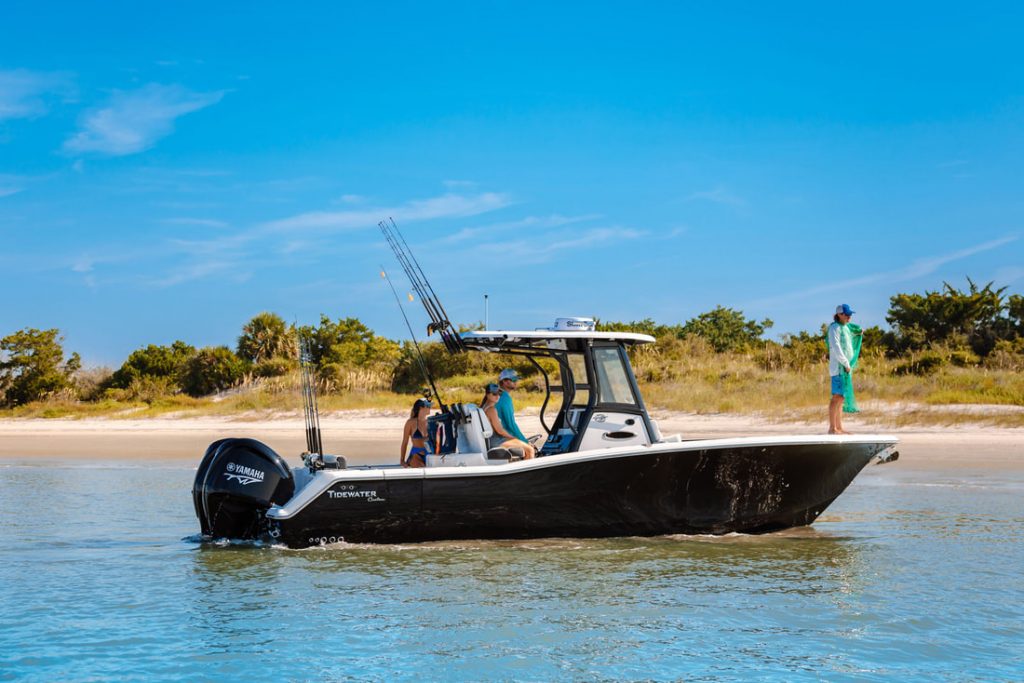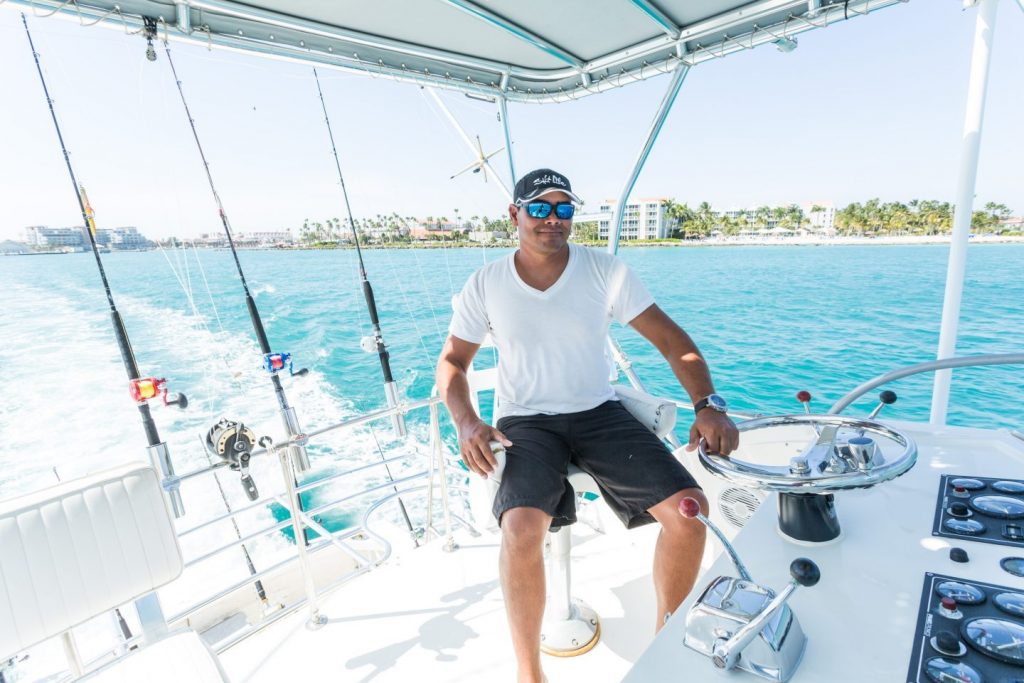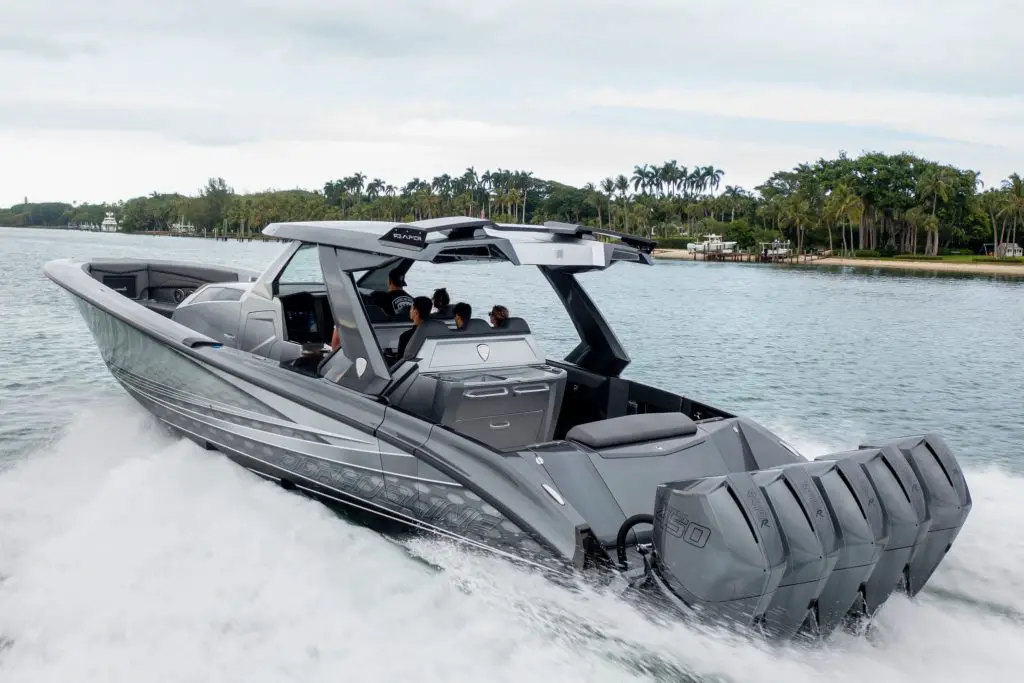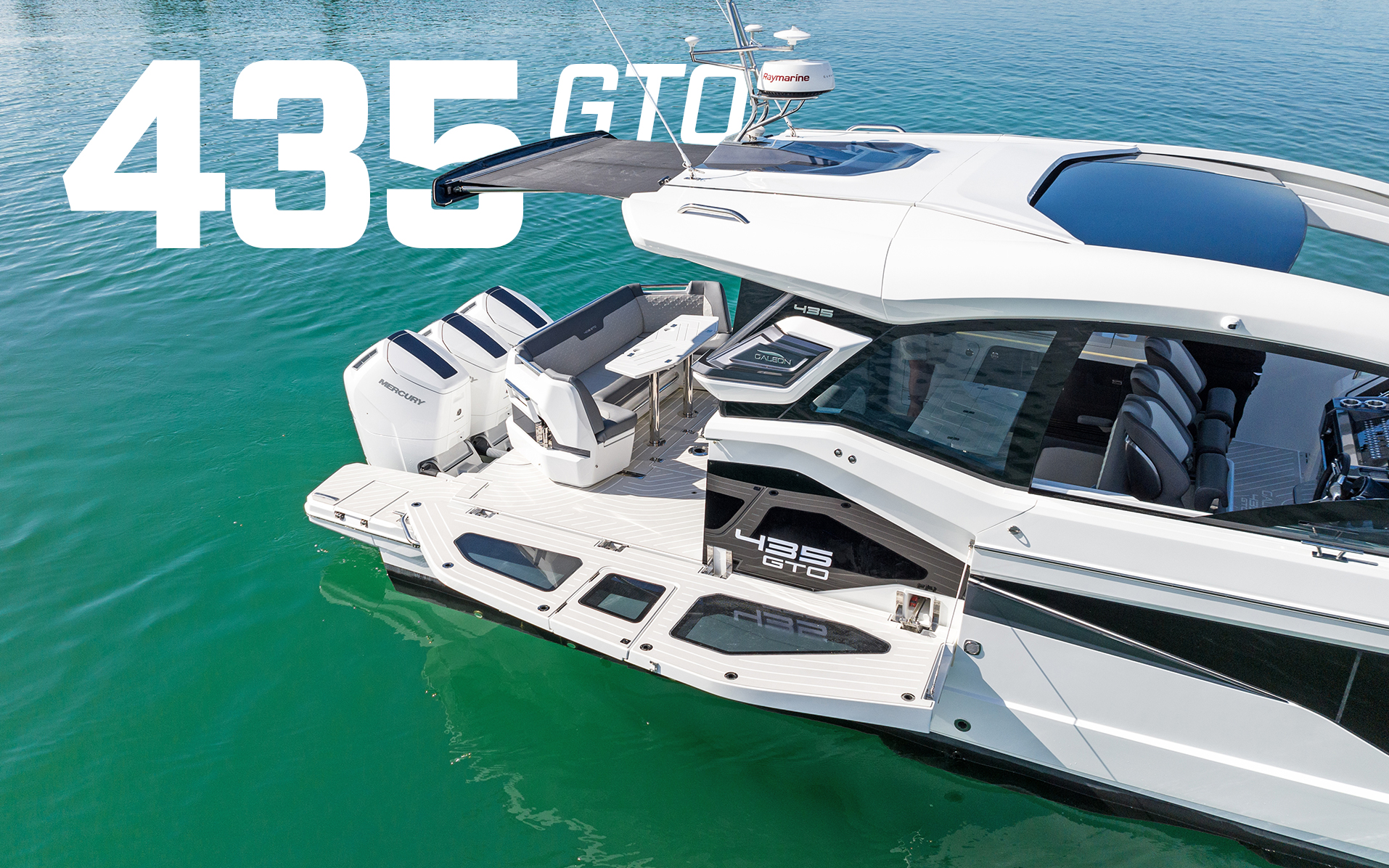How Long Can You Finance a Boat 2024: Key Factors and Financing Options
As we approach 2024, it is important for boat enthusiasts to understand the intricacies of boat financing. To make a well-informed decision, one must consider a variety of factors, such as loan terms, interest rates, and financial circumstances.

In recent years, boat loan terms have become increasingly flexible, with some lenders offering terms up to 20 years. This provides potential boat owners with various options to cater to their individual needs and financial goals.
Understanding the role of credit in boat financing is crucial since interest rates and loan terms depend on one's credit score.
Moreover, boat loans can cover a wide range of amounts, making it essential to determine which financing option best suits one's situation.
By researching the boat loan application process, estimating loan payments using boat loan calculators, and selecting the right lender, one can secure the most suitable boat financing option.

Key Takeaways
- Boat financing in 2024 offers flexible loan terms with some lenders providing terms up to 20 years
- Credit score plays a significant role in determining interest rates and loan terms
- Researching lenders and using boat loan calculators can help potential boat owners make well-informed decisions
Understanding Boat Financing in 2024
Types of Boat Loans
In 2024, various types of boat loans are available for those looking to finance their watercraft purchases. The most common options include secured and unsecured boat loans, offered by different lending institutions such as marine lenders, online lenders, and credit unions.
Secured boat loans require collateral, usually the boat itself, and tend to have lower interest rates compared to unsecured loans.
The loan terms for secured boat loans can range from short-term (5-10 years) to long-term (up to 20 years).
Unsecured boat loans do not necessitate collateral, making them a riskier option for lenders. As a result, they may have higher interest rates and shorter loan terms. Despite these drawbacks, unsecured boat loans can be a viable option for borrowers with excellent credit.
It's vital to research various lenders, such as marine lenders and credit unions, to understand the nuances of boat financing options in 2024.

Boat Loan vs Personal Loan
Another consideration when financing a boat is choosing between a boat loan and a personal loan.
A boat loan is specifically designed for purchasing a boat, often featuring competitive interest rates and longer loan terms, making them attractive for borrowers.
However, boat loans may require a substantial down payment (typically around 10-20% of the boat's price) and are primarily offered by marine lenders and some online lenders.
On the other hand, a personal loan is a more flexible financing option that can be used for any purpose, including purchasing a boat.
Personal loans can be acquired from banks, credit unions, and online lenders, often with shorter loan terms and higher interest rates compared to boat loans.
When choosing between a boat loan and a personal loan, it's crucial to weigh the pros and cons of each option and consider factors such as loan terms, interest rates, and provider availability based on your financial situation.
Determining Your Boat Financing Options
When planning to purchase a boat in 2024, understanding your financing options is crucial. This will help you make an informed decision based on the type of boat you want, the loan amount, and whether you prefer a secured or unsecured loan.
This section will guide you through the financing options available for new and used boats, as well as secured versus unsecured loans.
New Boats vs Used Boats
Before choosing a boat, consider the differences between new and used boats.
New boats are generally more expensive but come with a manufacturer's warranty and the option to customize. On the other hand, used boats are typically more affordable but might require more maintenance due to their age.
When looking into financing a boat, you can expect lenders to take its age into account. Some lenders might require a maximum boat age for financing, so keep this in mind when deciding whether to buy used or new.
- New Boats:
- Higher cost
- Manufacturer's warranty
- Customization options
- Used Boats:
- Lower cost
- Potential for higher maintenance
- Boat age might affect loan eligibility

Secured vs Unsecured Loans
Another factor to consider when financing a boat is whether you prefer a secured or an unsecured loan.
A secured boat loan uses the boat as collateral, which means that if you default on your payments, the lender can take possession of the boat to recover their funds.
On the other hand, an unsecured loan does not require any collateral but might come with higher interest rates due to the increased risk for the lender.
| Loan Type | Pros | Cons |
|---|---|---|
| Secured Boat Loan | Lower interest rates | Boat can be taken as collateral |
| Unsecured Loan | No collateral requirement | Higher interest rates |
When deciding on a loan type, consider factors like the loan amount, your credit score, and risk tolerance.
If you have a strong credit history, you might be eligible for more competitive rates on an unsecured personal loan. However, if you don't mind putting your boat up as collateral, a secured boat loan might offer better terms for you.
The Role of Credit in Boat Financing
Credit Score Impact on Financing
A borrower's credit score plays a significant role in boat financing. Financial institutions consider this score while determining the interest rate and terms of the loan.
Generally, borrowers with higher credit scores can secure loans at more favorable terms and lower interest rates, which can help maintain manageable monthly payments.
For instance, according to the Investopedia, boat loans typically range between 10 to 20 years. Therefore, a high credit score can aid in securing longer loan terms at lower rates.
In some cases, the boat financing process also involves a hard credit inquiry, which might cause a temporary drop in the borrower's credit score.
Addressing Bad Credit
If a borrower's creditworthiness doesn't meet the minimum credit score requirements for boat financing, they may face difficulties in obtaining a loan.
However, there are ways for borrowers with bad credit to improve their credit scores and work towards better loan terms.
- Payment history: Ensure timely payment of bills and debts
- Credit utilization: Keep the credit card balance below 30% of the credit limit
- Credit mix: Maintain a healthy mix of credit facilities like loans, credit cards, and lines of credit
- Credit inquiries: Reduce the number of hard credit inquiries by applying for necessary loans
Financial Considerations Before Applying
Boat financing can be a valuable tool to help you afford the boat of your dreams. However, before applying, it's crucial to understand the financial implications and assess the costs associated with boat ownership.
In this section, we will cover calculating the down payment and assessing additional costs associated with boat ownership.
Calculating the Down Payment
The down payment for a boat loan depends on factors such as the loan terms, boat price, and the applicant's financial situation.
It is crucial to determine a comfortable down payment that will secure favorable loan terms, such as lower interest rates, better terms, and manageable monthly payments.
Here are some factors to consider while calculating the down payment:
- Cost of the boat: The purchase price of the boat directly impacts the down payment amount. Higher-priced boats will require a higher down payment.
- Loan terms: The length of the loan term affects the down payment amount. Shorter loan terms may require higher down payments than longer-term loans1.
- Interest rates (APR): A higher down payment may result in a lower annual percentage rate (APR), which can save substantial money on interest expenses over the life of the loan.
- Debt-to-income ratio: Lenders assess an applicant's debt-to-income (DTI) ratio when determining loan eligibility. A lower DTI, resulting from a higher down payment, can increase the likelihood of loan approval.
Assessing Additional Costs of Boat Ownership
Beyond the purchase price and down payment, potential boat owners should also consider the ongoing costs associated with boat ownership. These costs can be significant and should be factored into the overall decision to purchase a boat.
- Insurance: Boats require insurance to protect the owner and the lender's investment. Premiums are based on factors such as the boat's value, engine size, and location2.
- Fuel: Operating a boat requires fuel, which can be a significant expense. Factors influencing fuel costs include boat size, engine type, and usage frequency.
- Maintenance: Regular maintenance is crucial to ensure the longevity and enjoyment of your boat. Maintenance costs can vary depending on the type and size of the boat and can include expenses for engine servicing, hull cleaning, and cosmetic upkeep.
- Repairs: Boat repairs can be costly, so owners should budget for potential repair costs when determining boat affordability. Make sure to consider having an emergency fund to cover repair expenses when needed.
Footnotes
The Boat Loan Application Process
Documentation Required
When applying for a boat loan in 2024, it's crucial to gather all the necessary documentation.
Typical paperwork includes personal identification, proof of income, and credit history. Some lenders may also require tax returns or statements of net worth to review your financial stability.
Furthermore, details about the boat you wish to purchase, such as the make and model, year, and selling price, will also be necessary for the loan application.
Lenders, such as credit unions and marine lenders, will thoroughly assess the documentation provided. It's essential to ensure that all information is accurate and up-to-date to avoid delays or complications during the application process.
Prequalifying for a Boat Loan
Prequalifying for a boat loan helps determine the loan amount and terms you may be eligible for before submitting a formal application.
This step typically involves a soft credit check, which does not impact your credit score. Most lenders offer online prequalification forms, or you can directly discuss your options with a loan officer.
In 2024, boat loan terms may vary with lenders offering repayment durations up to 20 years. The loan amount, interest rate, and repayment period depend on factors such as your credit score, financial history, and the boat's value.
When prequalifying, make sure to compare rates from different lenders, including marine lenders and credit unions, to get the best financing deal.
Utilize online tools such as a Boat Loan Calculator to estimate and compare the monthly payments based on different loan terms.
Keep in mind that prequalification is not a guarantee that you will receive the loan, but it gives you an idea of what to expect and makes the application process easier.
After prequalification, you may proceed with the formal loan application, which could involve additional paperwork or an appraisal of the boat you wish to purchase.
Boat Loan Calculators and Estimations
Estimating Monthly Payments
Boat loan calculators are essential tools for anyone considering boat financing.
These calculators help estimate monthly payments based on factors such as loan terms, interest rates, and the total loan amount.
For example, BoatUS offers a boat loan calculator which allows you to input the boat loan amount, interest rate, and term to determine the estimated monthly payment.
It is crucial to understand the effects of different repayment terms and interest rates on your monthly payments.
Longer loan terms typically result in lower monthly payments, while shorter terms require higher monthly payments. However, longer terms also mean more interest paid over the life of the loan.
Here are some examples of how changing loan terms and interest rates can affect monthly payments:
| Loan Term | Interest Rate | Monthly Payment |
|---|---|---|
| 10 years | 4% | $507 |
| 10 years | 6% | $555 |
| 20 years | 4% | $306 |
| 20 years | 6% | $358 |
Understanding the Total Loan Cost
While boat loan calculators are useful for estimating monthly payments, they can also help you understand the total cost of your boat loan.
The total loan cost includes both the principal amount borrowed and the interest paid over the loan term.
When comparing loan options, it's important to consider not only the monthly payment but also the total interest paid.
Annual Percentage Rates (APRs) are another essential factor to consider when comparing boat loans.
The APR comprises the interest rate and any other fees or charges associated with the boat loan, providing a more accurate representation of the loan's true cost.
Remember, a lower interest rate combined with a shorter loan term will generally result in less total interest paid over the life of your boat loan. However, striking a balance between affordable monthly payments and minimizing total interest paid is key to successful boat financing.
Repayment Strategies and Terms
Choosing the Right Loan Term
When financing a boat, it's important to consider the loan term that best suits your financial situation and goals.
Loan terms can range from short-term options like 5 or 10 years to longer terms such as 20 years.
A shorter loan term usually means higher monthly payments but less interest paid over the life of the loan, while a longer loan term means lower monthly payments but potentially more interest overall.
Before committing to a loan term, borrowers should evaluate their budget and determine how much they can comfortably afford to repay each month.
Additionally, it's wise to research various lenders and their terms to find the most favorable rates and conditions for your specific needs.
Options for Repaying Your Loan Early
It's not uncommon for boat owners to consider repaying their loan early to save on interest costs. However, prepayment penalties might apply, so it's critical to be aware of the potential consequences of early repayment.
Prepayment penalties are fees that some lenders charge if the borrower pays off their loan ahead of schedule.
Here are some strategies for repaying a boat loan early, potentially avoiding prepayment penalties:
- Extra Principal Payments: Making additional payments toward the principal balance can help reduce the overall interest paid and shorten the loan term. Be sure to communicate with the lender about applying extra payments to the principal, not to future interest payments.
- Refinancing: In cases where interest rates have dropped or a borrower's credit score has improved, refinancing a boat loan could lead to lower monthly payments or a shortened loan term. However, borrowers should be cautious of origination fees and closing costs associated with refinancing.
- Lump-Sum Payments: If a borrower comes into a significant sum of money, such as an inheritance or bonus, using it to pay down the loan balance can save on interest payments and shorten the repayment term.
Dealing with Boat Financing Challenges
Risk of Default and Repossession
When financing a boat, it's essential to consider the potential risks associated with the loan.
One key concern is the risk of default, which occurs when a borrower fails to make timely payments on the loan. Default can ultimately lead to the repossession of the boat.
Boat loans typically have terms of up to 20 years, which can make monthly payments more manageable. However, prolonged loan terms also increase the likelihood of financial setbacks and subsequent defaults.
To minimize the risk of default and repossession:
- Evaluate your financial situation and ensure you can accommodate the monthly payments.
- Create an emergency fund to cover unexpected financial disruptions.
- Maintain a stable employment status.
Refinancing and Loan Modification Options
If financial challenges arise during the loan term, borrowers may have options when it comes to refinancing or modifying their loan. Refinancing involves replacing the original loan with a new one, offering better interest rates or a longer payment term.
Refinancing a boat loan can lower your monthly payments, making them more manageable.
Key considerations for refinancing a boat loan:
- Improved credit score: If your credit score has improved since obtaining the loan, you may qualify for a lower interest rate.
- Current interest rates: Check if the current market rates are lower than your loan's interest rate.
- Loan term: Assess whether extending the loan term to reduce monthly payments is beneficial in the long run.
Loan modification is another viable option for borrowers facing challenges with their boat financing. It involves the lender altering the terms of the existing loan to make repayment more manageable for the borrower. While not as readily available as refinancing options, loan modification can be a lifeline for struggling borrowers.
Approaching lenders for loan modification:
- Reach out to your lender proactively if you anticipate difficulties in making payments.
- Be transparent and provide a detailed explanation of your financial challenges.
- Offer a modified repayment plan that is viable for both you and the lender.
Taking into account the risk of default and repo, and being well-informed about refinancing and loan modification options, can help boat owners navigate boat financing challenges more effectively.
Selecting the Right Lender
When financing a boat in 2024, it is essential to select the right lender that aligns with your needs and financial goals. In this section, we will focus on comparing lender offers and rates, as well as the importance of reputation and transparency when evaluating lenders.
Comparing Lender Offers and Rates
One of the first steps to finding the right lender is to compare various offers and interest rates. Online lenders, credit unions, and marine lenders are some options to explore.
For example, banks like Southeast Financial and Trident Funding specialize in marine loans, offering competitive rates and tailored loan options.
Some credit unions also provide boat loans, offering competitive rates and terms for their members.
Additionally, consider checking with the boat dealer from whom you are purchasing the boat, as they might have preferred lenders and special financing deals available.
Do not hesitate to explore online lenders like LightStream, LendingPoint and SoFi, which could have flexible personal loan rates to accommodate your boat-financing needs.
To make an informed decision, compare offers based on:
- Interest rates
- Loan terms
- Monthly payments
You should also take your monthly budget into account when comparing loan offers, ensuring that the chosen offer aligns with your personal finances and does not overburden your budget.
The Importance of Reputation and Transparency
A lender's reputation and transparency are crucial aspects to consider. A reputable lender will adhere to high ethical standards, ensuring you have a clear understanding of your loan agreement and all the associated costs.
Transparent lenders will provide ample information, offer user-friendly tools, and maintain clear communication, which can be invaluable during your boat-financing journey.
Research customer reviews and experiences with the lender to gain insights into their overall reputation.
When it comes to reputation, it is essential to verify that the lender you plan to work with is accredited by organizations like the Better Business Bureau, as well as having appropriate licensing.
Moreover, look for lenders with experience in the marine industry as this will help ensure they understand the unique nuances associated with boat financing and can provide you with the best-suited loan options.
Frequently Asked Questions
What is the typical maximum term for financing a used boat?
The typical maximum term for financing a used boat can vary depending on the lender and the borrower's creditworthiness.
However, most boat loans have terms ranging from 3 to 20 years source. The shorter the term, the higher the monthly payments will be, but the total interest paid will be lower.
Can you obtain boat financing with a poor credit score?
Obtaining boat financing with a poor credit score can be challenging, but it's not impossible.
Some lenders may be willing to work with borrowers who have less-than-perfect credit.
It's important to shop around and compare offers from different lenders to find the best option for your situation.
What are the current interest rates for a 20-year boat loan?
Interest rates for a 20-year boat loan can vary based on various factors like the lender, borrower's creditworthiness, and current market conditions.
It's essential to compare boat loan interest rates before making a final decision.
How does boat loan duration affect the interest rate offered?
The duration of a boat loan can affect the interest rate offered.
Generally, the longer the loan term, the higher the interest rate will be. This is because the lender faces a higher risk of default over a more extended period.
Is it possible to secure financing for a boat for a duration of 30 years?
It is relatively uncommon to secure boat financing for a 30-year period, as most lenders typically offer loans with terms ranging from 3 to 20 years source.
However, some lenders may consider extending loan terms on a case-by-case basis, depending on factors like the borrower's financial standing and the value of the boat.
What factors influence the loan amount and term eligibility for financing a boat?
Several factors can influence the loan amount and term eligibility for financing a boat.
These factors include the borrower's credit score, debt-to-income ratio, the cost of the boat, and the down payment they can provide.
Additionally, the boat's age, type, and condition can also impact loan terms and amounts.
Make sure to research and compare offers from different lenders to find the best financing option for your boat purchase.
Charlie is Editor-in-Chief of Sea Magazine







